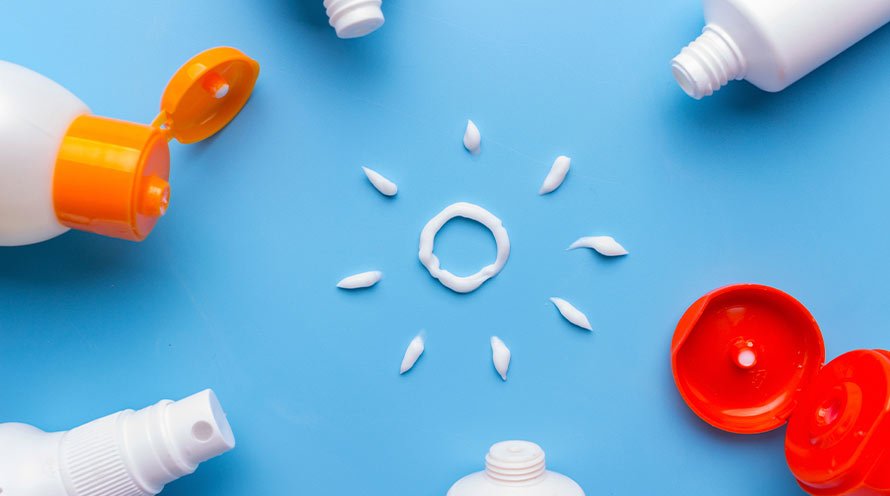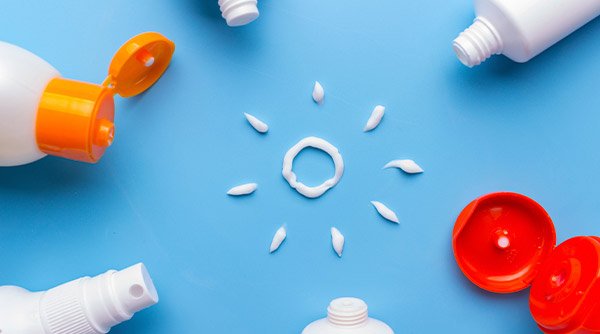The Ultimate Guide to Types of Sunscreens
If sunscreen is not a part of your AM skincare ritual yet, now is the time to make it! External aggressors like UV rays leave you with more than just a tan. They also make your skin susceptible to sun spots (a type of hyperpigmentation), photoaging (premature skin ageing), and in the worst case, skin cancer.
These are enough reasons to need a sunscreen but the most pressing question is how to choose among the different types of sunscreens. With various benefits, formulations, and ingredients, picking and committing to one sunscreen can seem tricky, but we have got your back! So, dive right into this sunscreen guide and find all your answers.
What are the types of sunscreens?
• Chemical sunscreen - Absorbs UV rays, converts them to heat, and releases them from the skin
• Mineral sunscreen – Sits on the skin and reflects UV rays away from it
What Are the Different Types of Sunscreens?
Like cleansers and moisturizers, sunscreens also come in different formulations and with different benefits. Choosing the right one helps you care for your skin while protecting it from the harmful ultraviolet rays.
Largely, sunscreen formulations can be categorized into two types: chemical sunscreen and mineral sunscreen. Here’s what makes them different -
• Chemical Sunscreen
These types of sunscreens typically contain chemical filters such as avobenzone, octinoxate, or oxybenzone. They work by absorbing the UV rays, converting them into heat, and releasing them from the skin. Chemical sunscreens have a thinner consistency, which makes them easier to apply and less likely to leave a white cast. They are also formulated with additional skincare benefits, like moisturizing or antioxidant protection.
• Mineral Sunscreen
These are also known as physical sunscreens. They use barriers like zinc oxide or titanium dioxide to block and scatter UV rays from penetrating the skin. These types of sunscreens work immediately when applied and are more suitable for sensitive skin, less likely to cause irritation or allergies.
While physical and chemical are types of sunscreens based on ingredients, there’s more to the world of sun protection. The formulation, strength, and purpose of sunscreens play a significant role in skincare too.
Different Types of Sunscreen Formulations
• Sunscreen Creams
Ideal for dry skin types, sunscreen creams are heavier and help you moisturize while giving you SPF protection. If you are looking for sunscreens in winter, these are the one.
• Serum Sunscreens
With a lightweight, serum-like consistency, serum sunscreens absorb into your skin instantly and leave no white cast or heaviness. Typically, serum sunscreens are also non-comedogenic and suit oily, acne-prone skin types.
• Sunscreen Sprays
With a mist-like consistency, sunscreen sprays quickly refreshes your sun protection without any trace of product. Best suited for makeup users.
• Gel-based Cooling Sunscreens
The scorching heat can also take a toll on your skin to leave it inflamed, reddened, and irritated. Use a cooling sunscreen with a light, gel-like formula to bring down the temperature of your skin and get relief and protection all at once.
Types of Sunscreen Functions
• Water Resistance
If you swim, surf, or simply love the beach, water-resistant sunscreen formulations are for you. These don’t melt off in water and continue to beat the UV even underwater.
• Sweat Resistance
Troubling commute and hot summers are never a good combination, especially if it leaves you covered in sweat. It can melt your sunblock right off this is why sweat resistant sunscreens are crucial, especially in summers.
• Oxidative-stress Resistance
UV, heat, and pollutants can leave you with oxidative stress. This stress can leave you with dark spots and blemishes, taking away your even tone skin. This is why sunscreens with antioxidants like vitamin C help you fight oxidative stress while maintaining radiant skin.
Types of Sunscreen Ratings
• Sun Protection Factor (SPF)
This measures protection against UVB rays which are responsible for sunburn. It indicates how long the sun’s UVB rays would take to make your skin redder with sunscreen. We recommend using sunscreen with spf 50 for maximum protection
• Protection Grade of UVA
This rates the protection level against UVA rays, which penetrate the skin a lot more deeply and cause ageing and long-term skin damage. The PA system uses a + grading system that signifies greater protection.
Read on below to learn more about how to choose a sunscreen.
We hope this sunscreen guide answers your queries like ‘how to choose sunscreen’, ‘what are the different types of sunscreens’, ‘how to layer sunscreen’, etc. So, make sunscreen your skin’s best friend and apply it every day no matter if you’re stepping outdoors or chilling indoors.
Keep the above-mentioned things about sun protection in mind and browse through a wide range of Garnier skincare products and skincare tips to flaunt the healthy, protected skin of your dreams with ease. Need help with your skincare routine? Take the Garnier Skin Care Quiz and get customized skincare routine in no time.


